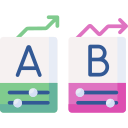Proof Before Commitment: Scorecards and Spikes
Assign weights to factors like performance, developer experience, ecosystem, access to native features, testing, and release complexity. A weighted scorecard aligns the team and prevents decisions from being swayed by one loud pain point.
Proof Before Commitment: Scorecards and Spikes
Prototype your riskiest feature in each candidate tool: push notifications, offline sync, or complex lists. Measure time-to-first-success, code clarity, and edge cases encountered. Short spikes surface long-term costs more honestly than marketing pages.







